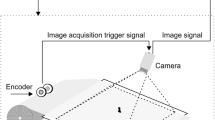Abstract
This paper presents an analysis of the state of the art of artificial intelligence applications in the textile industry. A review of the existing literature was performed. This article presents three methods of analyzing textile yarn. Some techniques, used in textile fabric inspection, are presented throughout this paper, as well as the use of artificial intelligence on improving the performance of productive systems using neural networks and artificial vision. The preliminary results demonstrate that the techniques covered are an asset in obtaining defects in textile fabrics at the industrial level. Taking into account the various methods of inspection and analysis of textile yarn, all present pros and cons in applicability in the textile area. In terms of advantages, all allow a better analysis of the textile yarn and defect detection with high quality, but with applicability in more complex systems. As a disadvantage, they present the fact that they do not have an already standardized algorithm that can be used, which makes its use more complex. Some possible future applications are also described.
Access this chapter
Tax calculation will be finalised at checkout
Purchases are for personal use only
Similar content being viewed by others
References
Textile inspection - industry overview. COGNEX (2019). Accessed 30 Jan 2020
Bullon, J., et al.: Manufacturing processes in the textile industry. Expert systems for fabrics production. In: ADCAIJ: Advances in Distributed Computing and Artificial Intelligence Journal, Salamanca, vol. 6, no. 4, pp. 15–23 (2017). ISSN 2255-2863. Accessed 08 Nov 2019
Kuo, J., Lee, C.-J., Tsai, C.-C.: Using a neural network to identify fabric defects in dynamic cloth inspection. Text. Res. J. – TEXT. RES. J. 73, 238–244 (2003)
Jeyaraj, P., Nadar, E.R.S.: Computer vision for automatic detection and classification of fabric defect employing deep learning algorithm. Int. J. Cloth. Sci. Technol. (2019)
Giarratano, J., Riley, G.: Expert Systems: Principles and Programming, 3rd edn. PWS Publishing, USA (1998)
Ahlawat, N., Gautam, A., Sharma, N.: Use of logic gates to make edge avoider robot. Int. J. Inf. Comput. Technol. 4(6), 630 (2014). ISSN 0974-2239
Leão, C.P., et al.: Web-assisted laboratory for control education: remote and virtual environments. In: Uckelmann, D., Scholz-Reiter, B., Rügge, I., Hong, B., Rizzi, A. (eds.) ImViReLL 2012. CCIS, vol. 282, pp. 62–72. Springer, Heidelberg (2012). https://doi.org/10.1007/978-3-642-28816-6_7
Veit, D.: Fuzzy logic and its application to textile technology. In Simulation in Textile Technology: Theory and Applications, pp. 112–141 (2012). https://doi.org/10.1533/9780857097088.112
Majumdar, A., Majumdar, P.K., Sarkar, B.: Application of an adaptive neuro-fuzzy system for the prediction of cotton yarn strength from HVI fiber properties. J. Text. Inst. 96(1), 55–60 (2005)
Chauhan, N., Yadav, N., Arya, N.: Applications of artificial neural network in textiles. Int. J. Curr. Microbiol. Appl. Sci. 7(04), 3134–3143 (2018). https://doi.org/10.20546/ijcmas.2018.704.356
Shamey, R., Shim, W.S., Joines, J.: Development and application of expert systems in the textile industry (2010)
Ghosh, A., Hasnat, A., Halder, S., Das, S.: A proposed system for cotton yarn defects classification using probabilistic neural network. In: Recent Advances and Innovations in Engineering (ICRAIE) (2014)
Carvalho, V., Cardoso, P., Belsley, M., Vasconcelos, R., Soares, F.O.: Yarn hairiness characterization using two orthogonal directions. IEEE Trans. Instrum. Meas. 58(3), 594–601 (2009)
Chattopadhyay, R., Guha, A.: Artificial neural networks: applications to textiles. Text. Prog. 35(1), 1–46 (2004)
Shamey, R., Hussain, T.: Artificial intelligence in the colour and textile industry. Rev. Progr. Colorat. 33, 33–45 (2003)
Carvalho, V., Soares, F., Vasconcelos, R.: Artificial intelligence and image processing-based techniques: a tool for yarns parameterization and fabrics prediction, pp.1–4 (2009). https://doi.org/10.1109/ETFA.2009.5347255
Zhang, Y., Lu, Z., Li, J.: Fabric defect classification using radial basis function network. Pattern Recogn. Lett. 31, 2033–2042 (2010). https://doi.org/10.1016/j.patrec.2010.05.030
Kumar, A.: Neural network-based detection of local textile defects. Pattern Recogn. 36, 1645–1659 (2003)
Furferi, R., Governi, L., Volpe, Y.: Color matching of fabric blends: hybrid Kubelka-Munk+ artificial neural network-based method. J. Electron. Imag. 25(6), 061402 (2016)
Furferi, R., Governi, L.: Prediction of the spectrophotometric response of a carded fiber composed by different kinds of coloured raw materials: an artificial neural network-based approach. Color Res. Appl. 36(3), 179–191 (2011)
Islam, A., Akhter, S., Mursalin, T.: Automated textile defect recognition system using computer vision and artificial neural networks (2004)
Aspland, R., Shanbhag, P.: Comparison of color difference equations for textiles: CMC (2∶1) and CIEDE2000. AATCC Rev. 4(6), 26–30 (2004)
Liu, C.: New method of fabric wrinkle measurement based on image processing. Fibres Text. Eastern Eur. 103, 51–55 (2014)
Zhao, S., Luan, F., Bala, K.: Fitting procedural yarn models for realistic cloth rendering. ACM Trans. Graph. 35(4), 11 (2016). Article 51
Acknowledgements
This work has been supported by FCT – Fundação para a Ciência e Tecnologia within the R&D Units Project Scope: UIDP/04077/2020 and UIDB/04077/2020.
Author information
Authors and Affiliations
Editor information
Editors and Affiliations
Rights and permissions
Copyright information
© 2022 The Author(s), under exclusive license to Springer Nature Switzerland AG
About this paper
Cite this paper
Pereira, F., Carvalho, V., Vasconcelos, R., Soares, F. (2022). A Review in the Use of Artificial Intelligence in Textile Industry. In: Machado, J., Soares, F., Trojanowska, J., Yildirim, S. (eds) Innovations in Mechatronics Engineering. icieng 2021. Lecture Notes in Mechanical Engineering. Springer, Cham. https://doi.org/10.1007/978-3-030-79168-1_34
Download citation
DOI: https://doi.org/10.1007/978-3-030-79168-1_34
Published:
Publisher Name: Springer, Cham
Print ISBN: 978-3-030-79167-4
Online ISBN: 978-3-030-79168-1
eBook Packages: Intelligent Technologies and RoboticsIntelligent Technologies and Robotics (R0)




